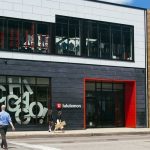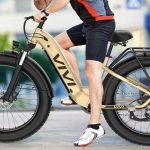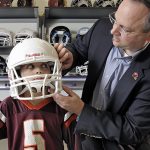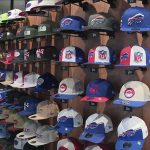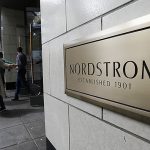Nike Inc. saw its second consecutive quarter of sliding backlogs in China and its eight straight quarter of gross margin erosion. But a better-than-expected performance from other parts of the world, led by stellar performance in its North America and Emerging Markets regions, drove a better-than-expected second quarter.
Nike Inc.s revenues increased 7.4 percent in its second quarter ended Nov. 30, to $5.96 billion, and were up 10 percent on a currency-neutral basis.
Excluding the impact of changes in foreign currency, Nike Brand revenues rose 11 percent, with growth in all key categories, product types and geographies except Greater China. Revenues for its Other Businesses segment increased 6 percent on a currency-neutral basis, as Converse, Hurley and Nike Golf all increased revenues during the quarter.
Excluding losses tied to its discontinued Umbro and Cole Haan businesses, earnings from continuing operations grew 8.5 percent to $521 million, or $1.14 a share, handily exceeding Wall Streets consensus estimate of $1.00 a share. The bottom-line growth reflected SG&A leverage and an increase in other income, which more than offset the impact of a slightly lower gross margin and an increase in the effective tax rate.
New orders, due for delivery by April 2013, were up 7 percent on C-N basis, driven by a 4 point increase in units and a 3 point increase in average price. That follows an 8 percent rise in the previous quarter. Futures in Greater China were down 7 percent, reflecting actions to reduce inventories, and flat in Western Europe, but that was offset by growth in other regions, led by a 14 percent hike in North America.
In North America, we created great momentum, said Nike CEO Mark Parker on a conference call with analysts. This is somewhat counterintuitive to some, given this market size and assumed maturity. But I see a tremendous growth potential in North America, fueled by our continued success in transforming the marketplace along category lines. Even more exciting, North America is a glimpse into the future. It’s a model for success we continue to adapt in key markets around the world.
Total Nike Brand global revenues increased 11.0 percent in the quarter on a C-N basis. Footwear and Apparel were both up 10 percent while Equipment climbed 27 percent. Net revenues for the Nike Brand were up 7.8 percent to $5.46 billion. By category, Footwear revenues grew 6.7 percent to $3.3 billion; Apparel increased 7.2 percent to $1.8 billion; Equipment advanced 24.3 percent to $332 million. Nike Brands direct-to-consumer revenue increased 27 percent, driven by a 16 percent comp store growth and a 39 percent jump in online sales. Earnings before interest and taxes (EBIT) for Nike Brand improved 19.3 percent, to $921 million.
Among categories across the Nike Brand on global basis, running delivered double-digit growth in the quarter again, helped by innovations such as Free, Lunar and Flyknit. The category also has 17 Nike Running stores across the world driving strong comps.
Nike Brands overall Womens business is outgrowing its Mens business, benefitting from better leveraging its Running, Training and Sportswear categories toward the gender. Said Charlie Denson, president of the Nike brand, on the call, Better still, our Women’s business will be bringing a lot of new energy into the retail space this spring and on into the summer.
Basketball saw double-digit growth in the quarter in North America with the help of marquee launches from Kobe, LeBron and others but also saw strong double-digit growth in Central and Eastern Europe and Western Europe, benefitting from attention brought to the category by the Olympics.
In the North America region, Nike Brand revenues in the quarter climbed 17.2 percent to $2.42 billion, bringing year-to-date revenue growth to 20 percent. Footwear gained 12.7 percent to $1.47 billion while Apparel moved up 19.2 percent to $788 million, including strong sales of NFL product. Equipment revenues vaulted 62.0 percent to $162 million. Direct-to-consumer revenues grew 23 percent, driven by 18 percent comp store sales growth.
EBIT in the NA region jumped 30.5 percent to $556 million as revenue growth, gross margin expansion, and SG&A leverage all contributed to increased profitability.
Denson said nearly every category was up in North America, led by double-digit growth in Running, Basketball and Men’s Training. He said its NFL team uniforms launch delivered beyond our expectations, which were pretty high to begin with, with the overall NFL license providing a huge platform for innovation and product, brand and distribution and not just in football but across the whole of the Men’s Training category.
He linked much of Nike Brands success in North America to the brands ability to connect with consumers through mega-events like the Olympics, the NBA Finals and the Super Bowl but also through digital communities through tools like Nike Plus. He also called out the success of many differentiated store concepts rolling out at partners, including Yardline at Champs, Track Club at Finish Line, House of Hoops at Foot Locker and Fieldhouse at Dicks SG.
We continue to see positive results as our wholesale partners report that the comp store growth for these spaces are exceeding their fleet averages, said Denson. Consumers are also in our DTC brand and category stores, factory stores and shopping online at NIKE.com. All of these executions work together to help transform the marketplace and fuel continued strong growth in North America.
Another star region is Emerging Markets, where C-N sales for the Nike Brand were up 18 percent with gains of 16 percent in Footwear, 24 percent in Apparel, and 16 percent in Equipment. Every territory grew and five of seven key categories reported double-digit increases.
Total sales were up 11.0 percent to $1.05 billion, the first $1 billion revenue quarter for the region. Footwear climbed 8.8 percent to $718 million, Apparel moved up 17.2 percent to $273 million; and Equipment increased 10.9 percent to $61 million. EBIT was up 23.5 percent to $305 million, driven by revenue growth and gross margin expansion. Emerging Markets futures were up 11 percent C-N.
Denson noted that the region has now amassed its 13th consecutive quarter of double-digit revenue growth, with its biggest categories, Running and Football, particularly strong. Added Denson, It’s not a single market that’s driving those big numbers. It’s happening in Brazil, Mexico and Argentina as well as other developing markets around the globe.
In Greater China, Nike increased reserves for product returns and retailer discounts to clear excess inventory at retail. It also proactively cancelled orders and reduced futures to tightly manage the amount of new product flowing into the market.
Partly as a result of these actions, C-N revenues for the Nike Brand in Greater China were down 12 percent, dragged down by a 9 percent drop in footwear and 17 percent slump in Apparel. Equipment C-N sales were down 2 percent. Net revenues were down 11.2 percent to $577 million. Footwear revenues were down 8.2 percent to $324 million while Apparel lost 16.4 percent to $224 million. Equipment sales were flat at $29 million.
EBIT fell 15.9 percent, to $185 million as lower revenues and increased operating overhead were partially offset by expanding gross margin as its inventory clearance activities were more than offset by the benefits of higher prices and easing raw material costs.
Denson said the company was seeing encouraging signs from its move to reset its China positioning. Those moves include making clothes that better fit the Chinese consumer and improving its distribution and retail systems, including focusing on bigger, better and more productive retail spaces.
Among the positives was 10 percent comp growth in its DTC doors as well as reports from its wholesale partners that comps are turning positive as inventories start to come down. A focus more around categories similar to the U.S. is also producing very solid, early results and are delivering comp store growth at about twice the level of the overall fleet.
In apparel, new fits and silhouettes launched for holiday 2012 are seeing improved sell-through. Added Denson, Although there is still a lot of work to be done, weve made some solid progress in making China a healthier market in the short term and a stronger market in the long term.
In Western Europe, C-N sales for the Nike Brand were up 4 percent, growing 8 percent in Footwear and 4 percent in Equipment while sliding 1 percent in Apparel. Net revenues were down 2.0 percent to $897 million. On a reported basis, Footwears revenues were up 1.3 percent to $545 million but Apparel sales declined 7.1 percent to $301 million and Equipment was down 3.8 percent to $51 million. EBIT moved ahead 22.8 percent to $113 million, reflecting higher gross margin and lower SG&A.
Don Blair, CFO, said the gains came despite economic challenges in Southern Europe. Added Blair, We continue to be encouraged by our progress in Western Europe as the actions weve taken to transform the marketplace are showing early signs of success.
Revenue growth for the quarter in Western Europe came from higher revenues for DTC stores and online as well as increased wholesale sales in every territory except Italy and Iberia, where revenues declined 9 percent and 23 percent, respectively. Every key category reported higher revenues for the quarter except Women’s Training and Action Sports, which reported single-digit declines. Running and Basketball were standouts, with each posting growth well over 20 percent.
In the Central & Eastern Europe region, C-N sales for the Nike Brand were ahead 7 percent, led by a 10 percent gain in Apparel, followed by Equipment, up 5 percent; and Footwear, 4 percent. Net revenues in the region inched up 1.0 percent to $266 million. Footwear revenues dipped 0.7 percent to $134 million, Apparel gained 5.4 percent to $117 million, and Equipment was flat at $15 million. EBIT increased 30.3 percent to $43 million. Futures were up 10 percent C-N.
In Japan, C-N sales for the Nike Brand were up 13 percent as growth of 10 percent in Footwear and 19 percent in Apparel offset a 6 percent slide in Equipment. Total revenues were up 10.6 percent to $219 million. Footwear advanced 7.0 percent to $107 million, Apparel jumped 18.1 percent to $98 million, Equipment was down 6.7 percent to $14 million. EBIT was up 22.8 percent to $43 million. Japans backlogs were up 4 percent C-N.
In its Other Businesses segment, sales grew 6 percent on C-N basis, driven by mid-single-digit growth at Converse and Hurley, and low double-digit growth at Nike Golf. Net revenues advanced 6.1 percent to $518 million. EBIT grew 12.7 percent to $80 million, driven by improved profitability at Hurley and Nike Golf.
Gross margin on a companywide basis declined 30 basis points to 42.5 percent. Nike said its pricing actions and the easing of material costs are more than offsetting the impact of ongoing labor cost inflation. But currency changes reduced its consolidated gross margin by about 70 basis points. Gross margin was also negatively impacted by a shift in the mix of the companys revenues to lower margin products and businesses. Added Blair, We remain confident in our ability to drive higher gross margin over time and continue to expect gross margin expansion in the fourth quarter of fiscal 13 with the full year essentially flat.
Selling and administrative expenses grew at a slower rate than revenue, up 6 percent. Demand creation expenses were $613 million, relatively unchanged from the prior year. Operating overhead expenses increased 10 percent to $1.2 billion due to additional investments made in the wholesale business to support growth initiatives and higher DTC costs as a result of higher volume driven expenses in existing Nike-owned stores and the cost of new stores opened in the last year.
The bottom line was impacted by an increase in its effective tax rate to 26.8 percent from 24.1 percent due to higher foreign rates.
Q2 inventories were up 9 percent while Nike Brand inventory grew 8 percent versus last year. Over 80 percent of the Nike Brand inventory growth in Q2 was driven by North America, which continues to show tremendous increases in revenues and futures, said Blair. As a percentage of worldwide inventories, closeouts were roughly in line with the prior year.
The bottom line included a loss from discontinued operations of $137 million against a loss of $11 million in the prior years quarter. The latest loss includes the loss recorded for the sale of the Umbro brand of $107 million, net of tax, in addition to net operating losses and divesture transaction costs for Umbro and Cole Haan during the period.
In May, Nike announced its plans to divest the Umbro and Cole Haan businesses in order to focus its resources on its Nike, Jordan, Converse and Hurley brands. In November, Umbro was sold to Iconix Brand Group for $225 million. It also reached an agreement last month to sell Cole Haan to Apax Partners for $570 million.
Looking ahead, Nike said it outlook remains essentially unchanged for the rest of the year. Q3 revenue is expected to grow at a low double-digit rate. Q4 is expected to see mid-single-digit revenue growth as it anniversaries strong revenues in last year’s fourth quarter, fueled by the Euro Championship, Olympics and NFL launch. For the full year, Nike continues to expect high single to low double-digit revenue growth on a constant currency basis.
Gross margins are expected to decline again in the third quarter due to its efforts to clear inventories in China as well as currency headwinds but are expected to be up approximately 80 basis points in the fourth quarter to end the year with essentially flat margins.

